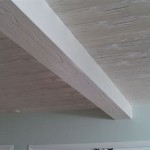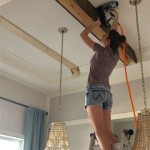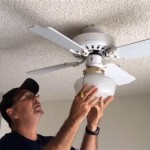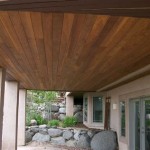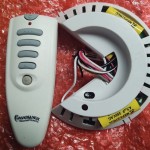How To Mount a Ceiling Fan On Angled Walls In Revit
Revit, a Building Information Modeling (BIM) software, provides a powerful platform for designing and documenting building projects with precision. When incorporating architectural features such as angled walls, the task of accurately placing and integrating mechanical elements like ceiling fans requires a specific methodology. This article outlines the process of mounting a ceiling fan on angled walls within a Revit project, ensuring both aesthetic integration and functional performance.
The accurate placement of a ceiling fan on an angled wall involves several considerations. First, the orientation of the fan relative to the sloped surface must be carefully determined to prevent collisions with the wall itself or other architectural elements. Secondly, the angle of the wall affects the mounting hardware requirements and the adjustment of the fan’s downrod to maintain proper blade clearance from the ceiling. Thirdly, the electrical wiring needs to be routed effectively through the angled wall, ensuring compliance with building codes and safety standards. The following sections detail how to address these considerations within the Revit environment.
Key Point 1: Preparing the Revit Project and Family Selection
The first step in mounting a ceiling fan on an angled wall involves preparing the Revit project and selecting an appropriate ceiling fan family. This process involves ensuring the project is correctly set up and the chosen family is compatible with the angled wall scenario.
Begin by opening the Revit project file. Verify that the project units are set appropriately (e.g., millimeters, inches) and that the relevant levels and grids are defined. These parameters will influence the placement and dimensioning of the ceiling fan.
Next, load a suitable ceiling fan family into the project. Revit offers a variety of pre-built families, or users can create custom families tailored to specific design requirements. When selecting a family, consider the following attributes: the fan's diameter, the length of the downrod, the style of the blades, and the presence of a light fixture. For angled wall applications, it's beneficial to choose a family that allows for downrod customization or includes a sloped ceiling adapter. If a suitable family isn't available, modifications to an existing family or the creation of a new family might be necessary.
To create a custom family, start by selecting a generic model family template. This template provides a flexible framework for defining the geometry and parameters of the fan. Utilize Revit's modeling tools to create the fan blades, motor housing, and downrod. Define parameters for the fan's dimensions, such as blade span and downrod length. These parameters will allow for adjustments during the design process. Assign materials to the various components of the fan to achieve the desired aesthetic appearance. Finally, add electrical connectors to the family to represent the wiring connections.
Once the family is loaded or created, ensure that it is properly categorized as a 'Lighting Fixture' or a relevant category for scheduling and documentation purposes. Assign necessary parameters to the family type properties, such as wattage, voltage, and light output (if applicable). Verify that the work plane is set appropriately for placement on a vertical surface, and ensure the family contains reference planes that allow it to be properly aligned with the angled wall surface.
Key Point 2: Creating and Modifying the Angled Wall
The next crucial step is to create and modify the angled wall within the Revit project. The accuracy of the wall's angle directly impacts the orientation and positioning of the ceiling fan.
Use the 'Wall' tool in Revit to create the angled wall. By default, Revit walls are created vertically. To create an angled wall, select the 'Wall' tool under the 'Architecture' tab. Choose a wall type that is suitable for the architectural context (e.g., generic wall, concrete wall, stud wall). Draw the wall segment using the sketch tools, ensuring that the start and end points are accurately placed according to the design intent. Once the wall is created, its angle can be adjusted using the 'Properties' palette. Select the wall, and locate the 'Cross-Section' parameter. Change this from 'Vertical' to 'Slanted'. A 'Angle from Vertical' parameter will then appear, allowing the angle of the wall to be defined.
Alternatively, an angled wall can be created using the 'Massing & Site' tools. Create an in-place mass, then use the 'Face by Face' tool to create a wall based on the mass face. This method provides greater flexibility in shaping the wall's geometry.
Once the angled wall is created, verify its dimensions and angle using Revit's dimensioning tools. Ensure that the wall aligns correctly with other architectural elements in the project, such as floors, ceilings, and adjacent walls. If necessary, adjust the wall's position or angle to achieve the desired design outcome.
To facilitate the mounting of the ceiling fan, consider adding a reference plane to the angled wall that represents the desired mounting location. This reference plane can be used to accurately position the fan family and ensure its alignment with the wall surface. Name the reference plane descriptively (e.g., "CeilingFanMount").
Furthermore, create a void in the wall if electrical wiring needs to be concealed within the wall's structure. Use the 'Edit Profile' tool to modify the wall's profile, creating an opening for the wiring conduit. Ensure that the void is appropriately sized and positioned to accommodate the wiring requirements. This can also be achieved by using the "Opening" tool to create a shaft through the angled wall for the electrical conduit.
Key Point 3: Placing and Adjusting the Ceiling Fan Family
With the Revit project prepared and the angled wall defined, the final step is to place and adjust the ceiling fan family to ensure its accurate integration with the architectural design.
Select the ceiling fan family from the project browser and initiate the placement process. Use the 'Place on Face' option to position the fan directly onto the angled wall surface. Align the fan with the reference plane created earlier, ensuring that the mounting point corresponds to the desired location. Use the 'Rotate' tool to adjust the fan's orientation relative to the wall, aligning it with the architectural lines or other design features.
Once the fan is placed, adjust its parameters to suit the angled wall condition. Modify the downrod length to maintain proper blade clearance from the ceiling or floor. Consider using a sloped ceiling adapter if the fan family provides this option. The sloped ceiling adapter allows the fan to hang vertically even when mounted on an angled surface, ensuring optimal airflow and aesthetic appearance. This is particularly important for fans with integrated light fixtures, as a tilted light fixture can create uneven illumination.
To fine-tune the fan's position, use Revit's alignment and dimensioning tools. Align the fan with adjacent architectural elements, such as windows or doors, to create a visually harmonious composition. Dimension the fan's position relative to the wall edges and other features to ensure accurate placement and documentation. Check if the fan blades have sufficient clearance from the angled wall; this often necessitates adjusting the downrod length or the placement of the fan along the wall.
Pay particular attention to the electrical wiring connections. Ensure that the wiring conduit is properly routed through the void created in the wall. Use Revit's ductwork and piping tools to model the conduit runs, ensuring that they comply with code requirements. Add electrical fixtures to the project and connect them to the fan's electrical connectors. Verify that the electrical circuit is correctly defined and that the fan is properly wired for operation.
Finally, generate views of the angled wall and ceiling fan from various perspectives, including plan views, elevation views, and 3D views. Use these views to visually inspect the fan's integration with the architectural design and identify any potential conflicts or issues. Adjust the fan's position, orientation, or parameters as needed to achieve the desired aesthetic and functional outcome. Document the fan's specifications and placement details in Revit schedules and annotations. This documentation will serve as a valuable record for construction and maintenance purposes.
By following these steps, it is possible to accurately mount a ceiling fan on angled walls within a Revit project, ensuring seamless integration with the architectural design and compliance with building codes and safety standards.

Ceilings In Revit Tutorial Sloped Ceiling Arc Floor Integrated
Bim Objects Free Aloha L Brown Fan With Light Bimobject

Ceiling Fan In Revit Free 225 58 Kb Library

Ceiling Fan Revit Ventilador De Techo Bimshares

Solved How To Show The Structure Of Axial Fan Autodesk Community

How To Add A Ceiling In Revit Architecture

Solved Revit Family Light On Sloped Ceiling Autodesk Community

Ceiling Design In Revit How To Create Architecture
.png?strip=all)
Ceiling Fan 1 In Revit Free 208 00 Kb Library

Revit Attaching Walls To Roof
Related Posts



